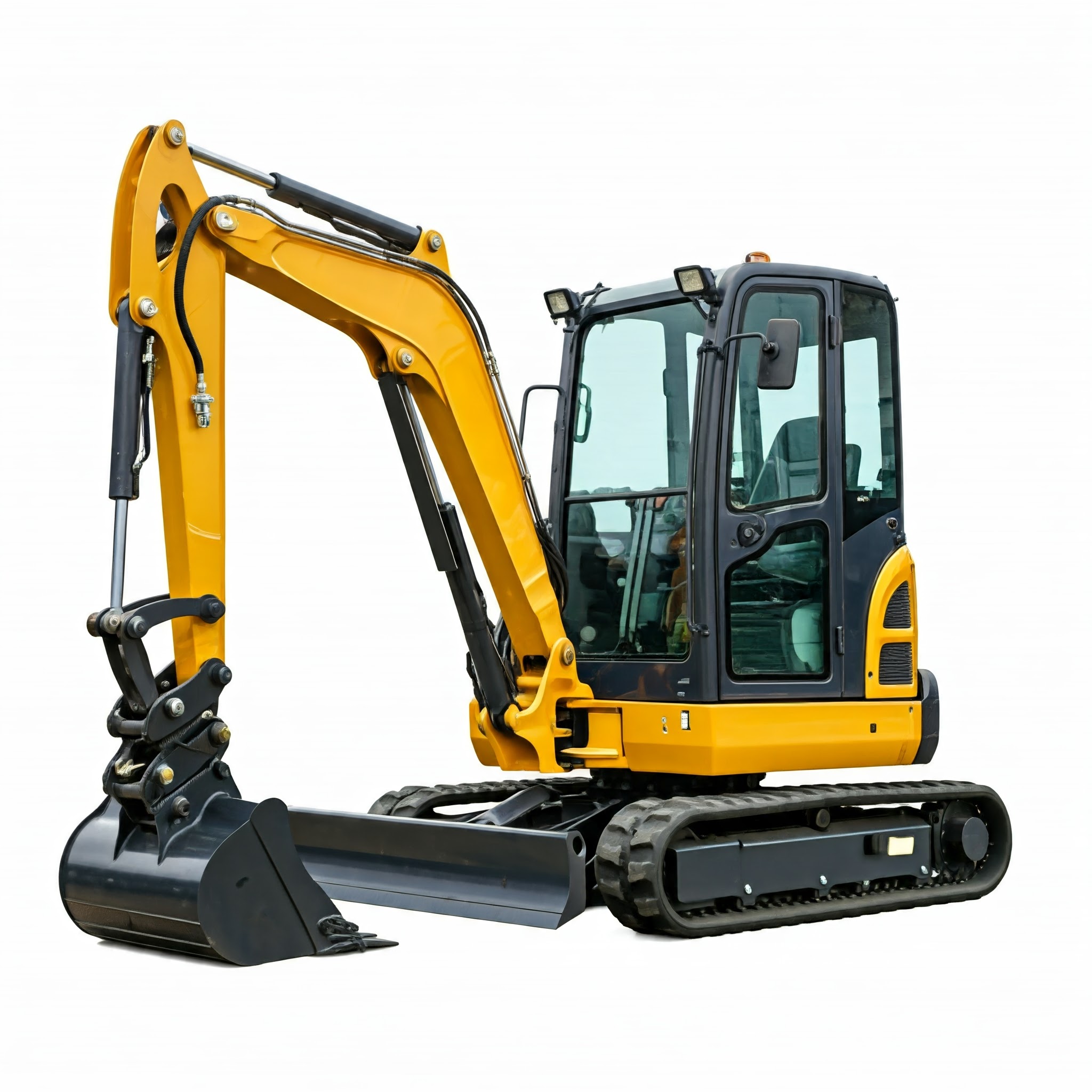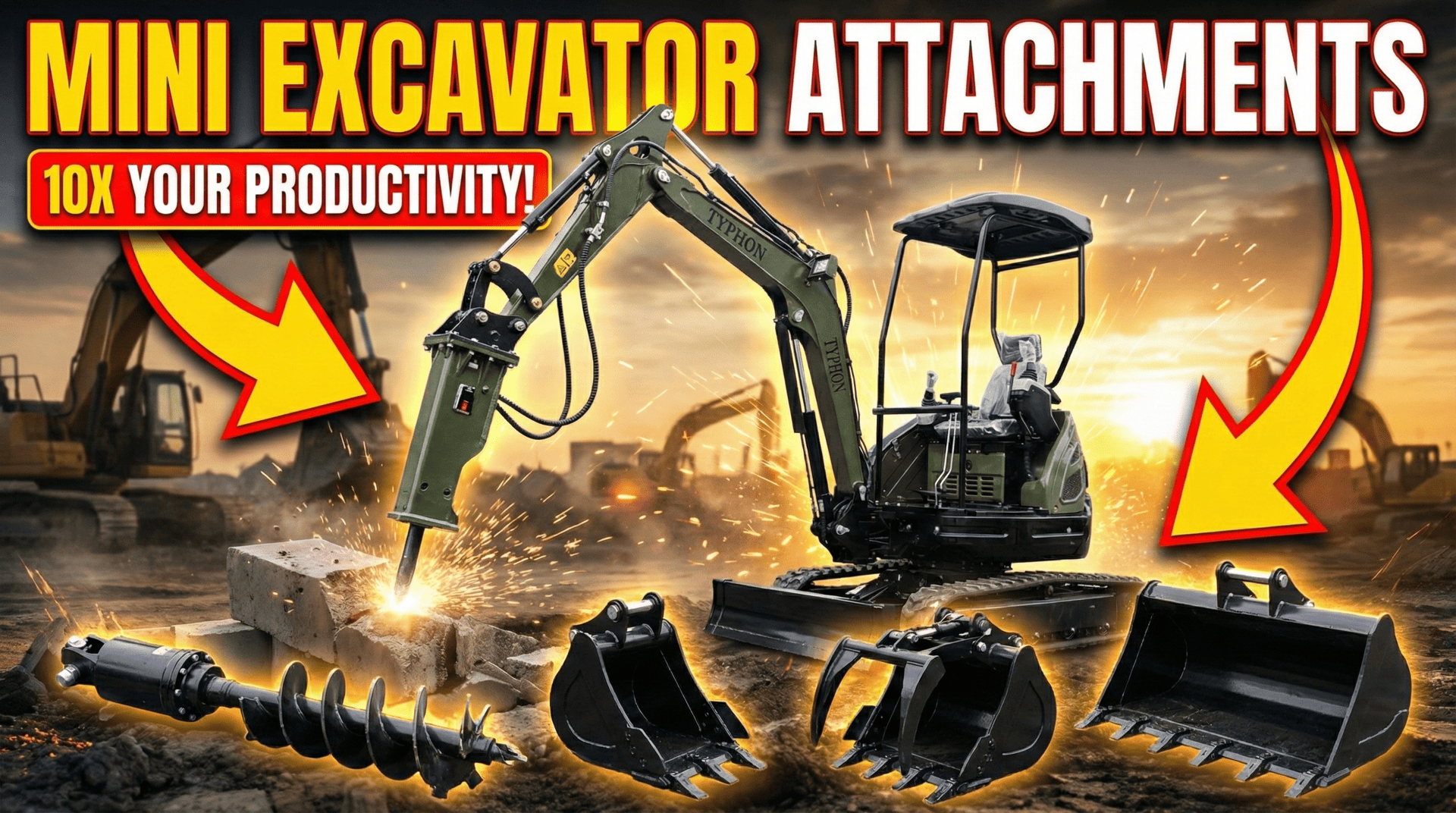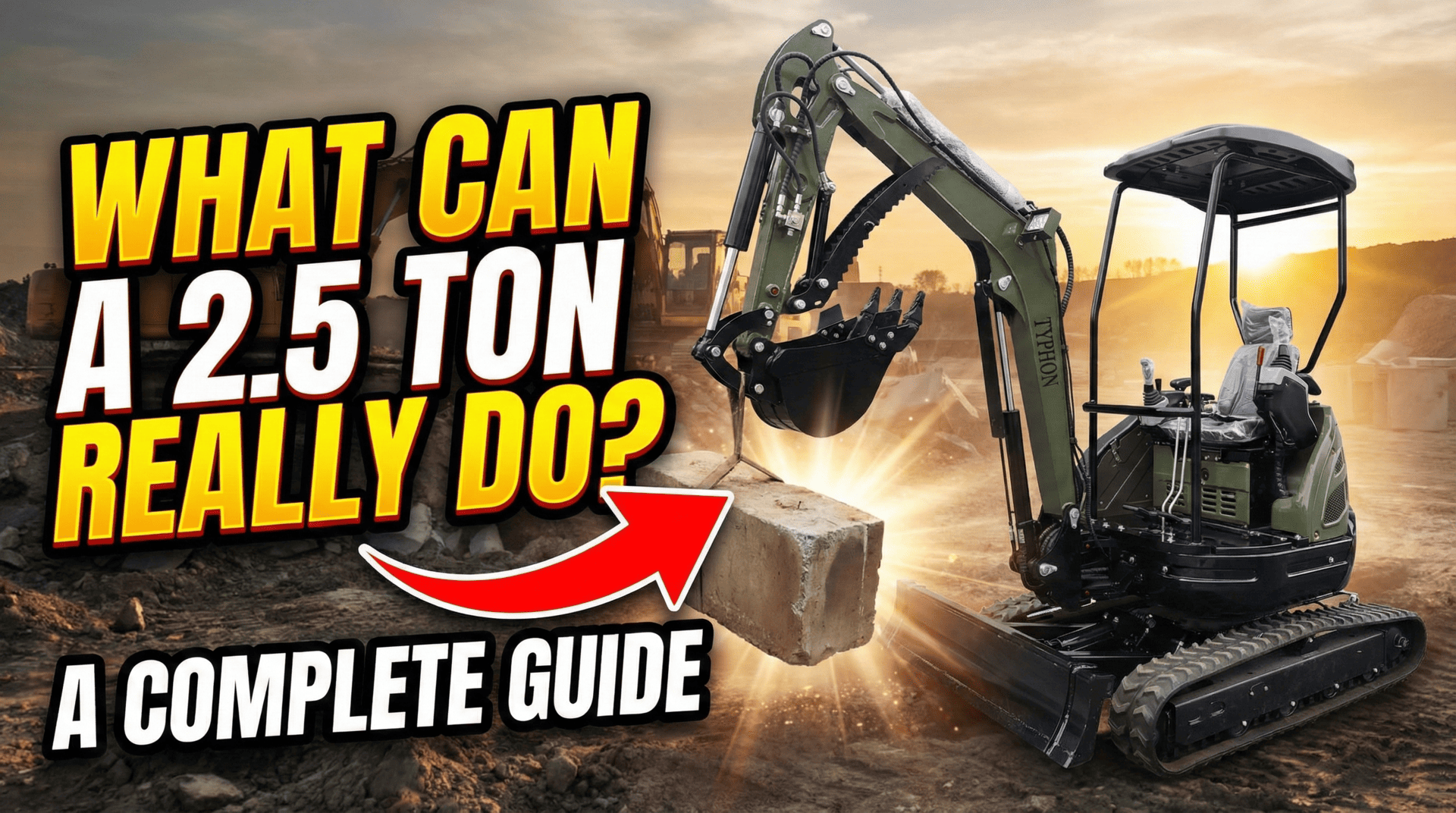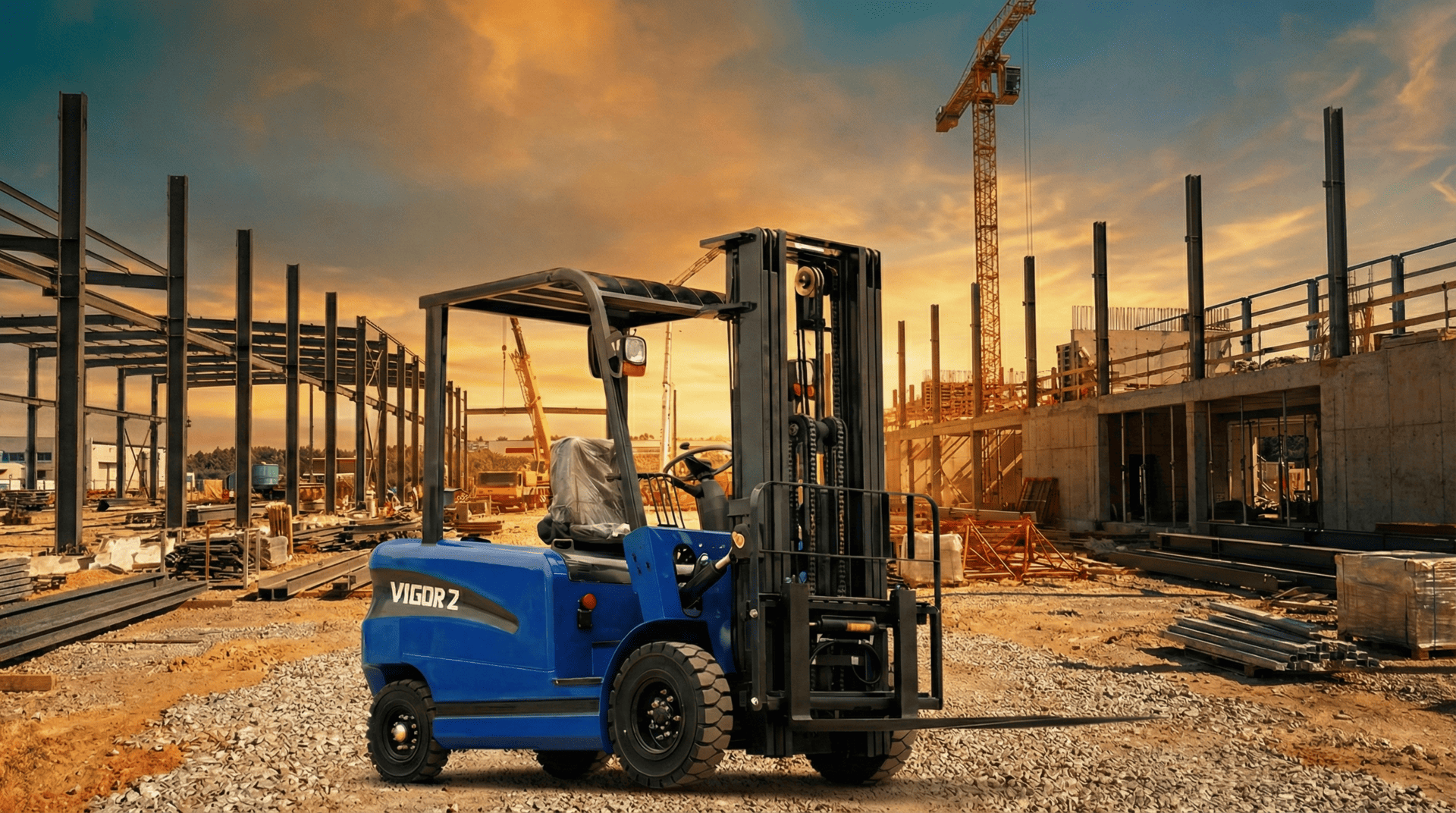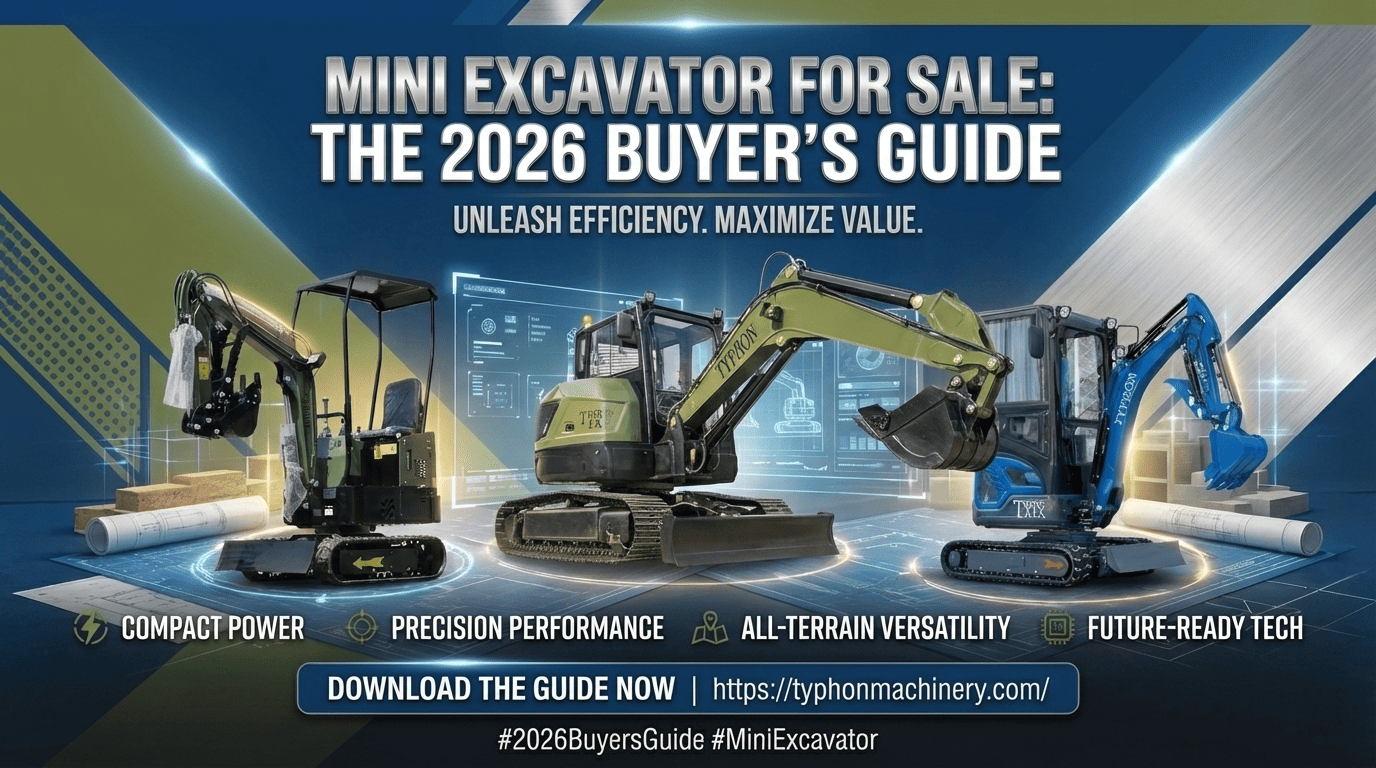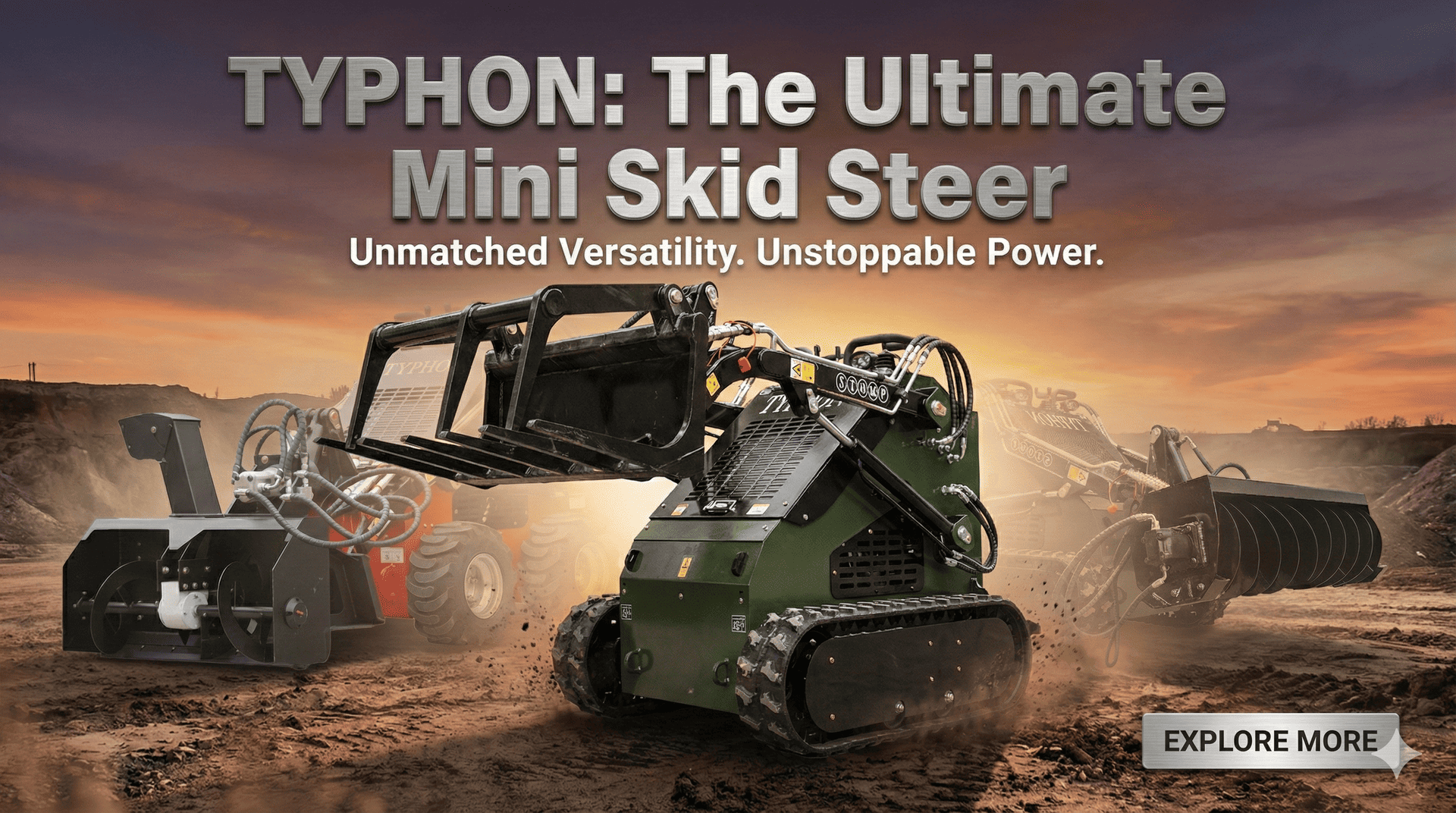Mini excavators have become a mainstay in building projects when room is limited but digging and lifting is absolutely necessary. Selecting the correct mini excavator size will greatly affect the effectiveness and success of your project given different sizes and capabilities. This article will go over the main elements to take into account while choosing a small excavator and offer advice to let contractors, building businesses, and do-it-yourselfers make wise judgments.
Professionals in gardening and building can make use of the flexible machines known as excavators . Still, a conventional excavator is a large equipment that usually won’t fit in small areas of work. Here is where the small excavator finds use.
The compact design of a micro excavator enables it to negotiate and run inside smaller job locations. Mini excavators are still available in numerous sizes even now. This all-inclusive information on mini excavator dimensions and advice on choosing the correct size for your next job will help.
The weight of the excavator determines all its dimensions. More precisely, although they can run as tiny as under one ton, micro excavators are categorized as anything under 10,000 pounds. Although the weight of the machine finally defines its lifting ability when selecting a small excavator, this does not always indicate that picking the biggest size would do the task quicker.
Let’s examine more closely the most often used mini excavator sizes and their applications.
Common Mini Excavator Weight
Understanding the Basics
Mini excavators fit several kinds of tasks and have varying weight ranges. Understanding these categories will assist you to reducing your options and choosing the equipment most appropriate for your requirements. The variety of choices from less than 1 ton to over 10 tons lets you be flexible in numerous building situations.
Less Than 1-Ton Mini Excavator
Small-scale projects would benefit greatly from these lightweight tools. Among do-it-yourselfers working on landscaping projects in homes, their small size makes them ideal for navigating limited locations. While they lack the power of larger models, their ability to access tight spots makes them invaluable for projects like trenching for utilities or laying pipes for sprinkler systems.
1- to 2-Ton Mini Excavator
As one moves up in size, the 1-to 2-ton class provides more power while keeping a quite small footprint. Utility and drainage projects would find these excavators fit as they can dig trenches up to 8 feet deep. They can effectively move dirt and wood around construction sites, and even do little demolition chores such as asphalt removal.
3- to 5-Ton Mini Excavator
Enhanced Functionality
Mini excavators with their 3- to 5-ton range offer a good mix of power and mobility. Trenching, foundation digging, and general site preparation need for these machines. Reliable for pipe and cable contractors, they can dig trenches up to 12 feet deep.
Versatile Applications
From foundation building for homes to clearing land and removing debris, these excavators are flexible enough to manage a range of jobs. Their more strength makes site preparation—including chores like land clearing and snow plowing—easible.
Balancing Power and Size
Although still regarded as small, this weight range provides more power without compromising the agility required for confined working environments. Contractors trying to maximize output on smaller building sites find them appealing because of this harmony.
6- to 10-Ton Mini Excavator
Maximum Power in a Compact Package
The 6- to 10-ton micro excavators offer extraordinary power and capacity for restricted areas in the greatest size class regarded as compact. From trenching and backfilling to foundation excavation for both residential and small commercial projects, these machines are appropriate for a wide spectrum of uses and can dig trenches up to 15 feet deep.
Handling Demanding Projects
This class provides the power required to effectively complete tasks needing significant excavation and heavy material removal. These excavators are built to handle difficult jobs whether they involve destroying buildings or clearing rocks and stumps from ground.
A Versatile Workhorse
These little excavators provide builders with a tool that can handle a range of jobs without the weight of more big machines as they mix the advantages of small design with strong capability. Their adaptability guarantees they remain a great advantage on many building projects.
Mini Excavator Key Specifications and Considerations
Operating Weight
Stability and capacity of a micro excavator depend much on its working weight. Acting as a counterpoint to the bucket’s load, it comprises the weight of the machine, operator, and fuel. Choosing a compact excavator with more running weight is absolutely essential for operations demanding significant lifting and excavation through densified materials.
Digging Depth
Digging depth shows the extent to which the excavator can pierce surfaces. Larger mini excavators typically offer greater digging depth, but specifications can vary across different makes and models. Effective operation depends on your project’s needs aligning with them.
Overall Dimensions
Although micro excavators are meant for confined areas, measurements might vary. By matching the measures of the excavator’s height, breadth, and length to the measurements of the working area, one guarantees best fit and functionality, therefore enabling smooth operation.
Engine Power
Powering Through Tasks
Measuring in horsepower or kilowatts, engine power shows the machine’s capacity for generation. More energy for jobs like breaking through compact surfaces and excavating big loads comes from higher engine power. Analyzing engine power with respect to the requirements of your project guarantees the excavator’s capacity to properly manage the demands.
Boosting Efficiency
A strong engine may greatly improve the efficiency of building activities, thereby lowering the project completion times. To find the suitable engine power for your mini excavator, consider your workload and the kind of materials you will be handling.
Matching Capacity to Needs
Juggling power with other criteria guarantees you are not spending too much for unneeded features. Select an engine to maximize performance and economy based on your particular needs.
Bucket Breakout Force
Understanding Breakout Force
Usually expressed in pounds-force, bucket breakout force is the highest force the excavator bucket can generate. The capacity of the equipment for digging and lifting directly depends on this parameter. More breakout force lets the excavator manage heavy loads more effectively.
Tackling Tough Conditions
Effective excavation for projects requiring thick or compacted materials depends on a larger breakout force. Knowing this specification helps you make sure your excavator can handle the demands of the work, whether it means lifting huge loads or breaking through difficult surfaces.
Balancing Force and Flexibility
Although a high breakout force is advantageous, it’s crucial to counter this with other criteria and project needs. Think through the kinds of materials you will come across to select an excavator with the correct force and flexibility ratio.
Arm Reach
Extending Possibilities
The reach of the arm indicates its extent, which is a necessary characteristic even in small areas. Striking a mix between suitability and practicality, it is important to make sure the arm’s reach fits the digging and reaching requirements of your project.
Navigating Tight Spaces
In building situations with limited space, reaching farther might alter everything. A longer arm reach gives more flexibility in your operations whether you are working around barriers or accessing difficult places.
Optimizing Efficiency
By extending the arm’s reach, the general efficiency of the excavator is improved, therefore lowering the demand for repositioning and downtime. Review the arrangement of your project to ascertain the best reach for your little excavator.
Swing Space
Maneuverability in Confined Areas
Swing space—that is, the machine’s capacity for rotation free from obstruction—is critical in confined working areas. Low and zero-swing excavators provide effective operation without sacrificing agility, therefore serving projects with space restrictions.
Enhancing Operational Flexibility
Zero-swing excavators offer an edge for projects where every inch matters by reducing the possibility of running afoul of nearby buildings. Analyze the arrangement of your project site to see whether minimum performance requires less swing area.
Navigating Challenges
Selecting an excavator with the suitable swing space guarantees flawless performance even in the most demanding surroundings. Analyze the space restrictions of your project to choose the appropriate machine for the work.
Dumping Height
Reaching New Heights
The highest height the arm of the excavator can dump or scoop contents from its bucket is known as the dumping height. This standard establishes loading or unloading compatibility with dumpsters, trucks, or other containers.
Streamlining Material Handling
Success of a project depends on effective handling of materials. Increased dumping height helps loading and unloading, therefore saving time and effort needed for material movement.
Matching Height to Logistics
Check the logistics of your project to make sure the dumping height corresponds with the associated containers or trucks. Selecting an excavator with an appropriate dumping height improves the on-site smooth material flow.
Understanding Mini Excavator Limitations What to Keep in Mind
Digging Depth and Reach
Usually meant for jobs involving lesser depths and shorter stretches than their bigger counterparts, mini excavators are Their usefulness for particular uses, including excavating deep ditches or traversing over obstacles, may suffer from this restriction. Analyzing project depth needs guarantees the small excavator fits the current job.
Lifting Capacity
Mini excavators have a clear drawback in lifting capability when compared to bigger equipment. This feature might make them less suited for jobs involving lifting rather hefty weights and demolition. Finding out if a small excavator can efficiently manage the lifting needs depends on knowing the weight requirements of your project.
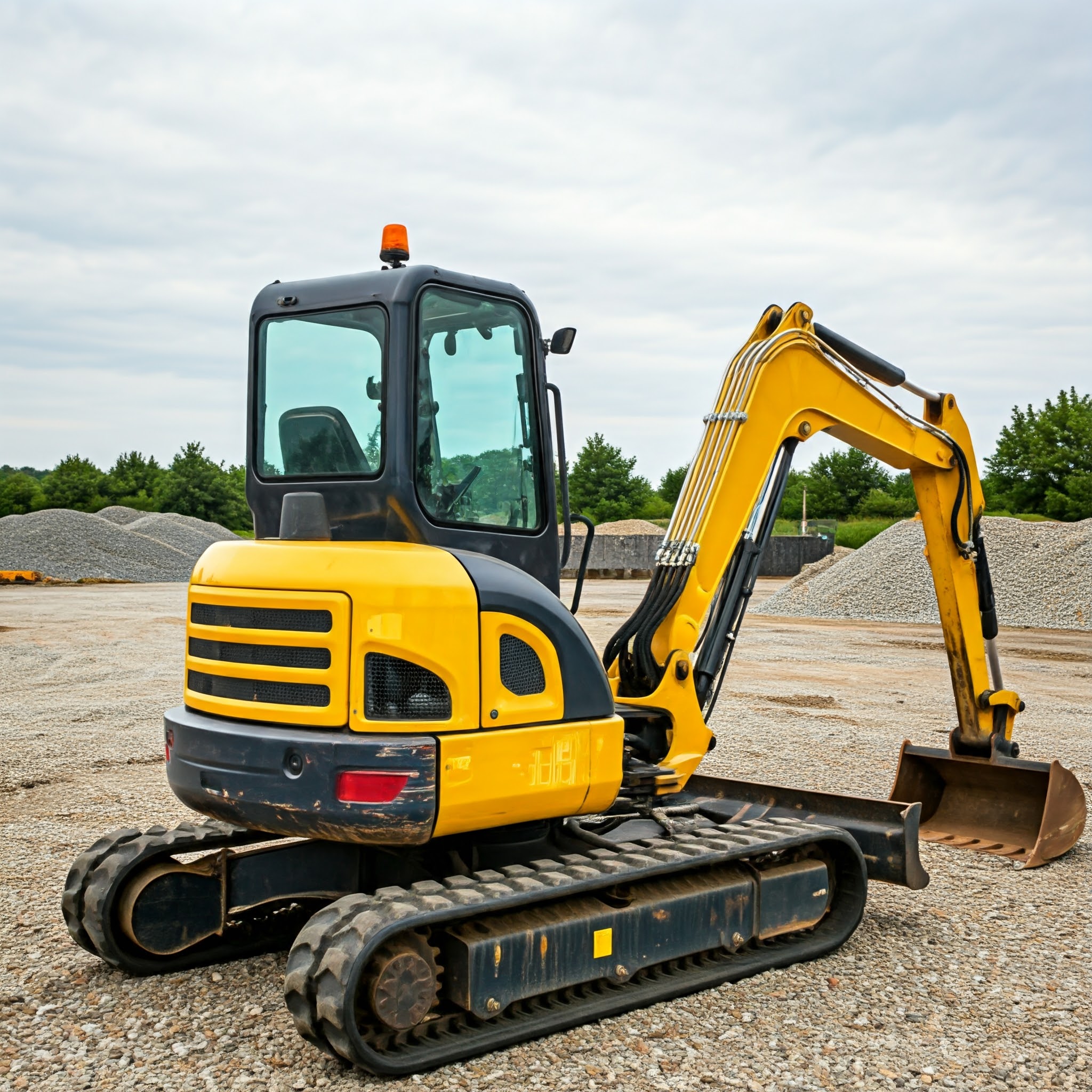
Stability
Being lighter than their bigger counterparts, mini excavators might find it difficult to stay steady on uneven ground. Choosing a bigger machine might be required if a task location requires negotiating sloping or rocky terrain to provide better stability during operation. Prevention of any stability problems depends on careful terrain evaluation.
How Much Does It Cost to Rent a Mini Excavator?
Navigating Rental Costs
Mini excavator rental prices could vary depending on rental period, location, and other features. See stories on cost-effectiveness and long-term investment issues to find out more about the benefits of purchasing an excavator rather than renting one.
Sizing Appropriately
Selecting the best affordable and small excavator depends on carefully weighing site restrictions, digging needs, and project weights. Appropriate sizing guarantees effective completion of building activities and increases mobility and productivity.
Weighing Rental vs. Purchase
Based on the frequency and length of your project, compare the benefits and drawbacks of renting to buying a small excavator. Knowing your particular requirements guides your choice of the most financially feasible course of action for your building projects.
How Much Can a Mini Excavator Dig Per Day?
Estimating Digging Capacity
Target depth, site soil, and machine size all affect the amount a mini excavator can dig in one day. Usually digging 8 to 12 cubic yards of dirt every hour, micro excavators translate to 64 to 96 cubic yards daily depending on an 8-hour workweek.
Considering On-Site Conditions
It should be mentioned that this estimate is only a forecast. The operator’s method and certain on-site conditions determine the real output. Productivity of the equipment depends on elements such as cycle durations, bucket capacity, and kind of soil.
Customizing Estimates
Think about elements like the excavator bucket capacity, expected labor hours, and any special site obstacles for a more realistic estimate. Customizing your expectations to the particular requirements guarantees effective design and implementation of the project.
What Is an Alternative to a Mini Excavator?
A small track loader, sometimes called a skid steer loader, is one substitute for a mini excavator. Materials may be dug, graded, lifted, and hauled using CTLs. Although attachments like buckets, forks and augers let a skid steer do comparable duties to a compact excavator, it does not have the digging depth and capacity of that tool.
Still another substitute for a small excavator is a backhoe. Backhoes will be used in landscaping projects and building for digging, trenching, and demolition chores. If deep trenching is the aim, however, consider staying with an excavator, as backhoes have a limited digging depth. Less suited for operating in confined areas, backhoes are also bigger and less agile than small excavators.
Conclusion – Mini Excavator Size
Maximizing productivity, improving building projects, and producing desired results all depend on choosing the correct mini excavator size. Understanding the weight classes, important specs, and restrictions of mini excavators can help contractors, building businesses, and do-it-yourselfers make wise judgments fit for their project requirements. Remember, selecting the correct instrument for the task is about finding the ideal match for your particular needs rather than only about power. Whether you are renting or buying, thinking through operational weight, digging depth, and mobility can help you find the road to building success. Many tools and professional advice are available to help people keen to learn more on their mini excavator adventure.

